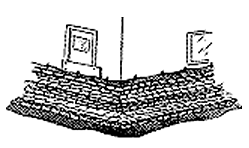The City of Elk Grove only makes sandbags available in anticipation of continuous and extended heavy rainfall events where severe, widespread flooding may occur. Public Works will provide Elk Grove residents and businesses up to 10 free sandbags when the sandbag distribution site is open. Sandbags are intended for properties prone to flooding. The site is a self serve site. Bring proof of address and shovel, sand and sandbags will be provided.
If your property has a history of flooding or standing water each year (such as water building up at the garage or back patio for example), you are encouraged to get sandbags in advance of the rainy season and have them on hand throughout the winter. Sandbags and sand are available, inexpensively, at most hardware and home improvement stores.
Sandbag Distribution Sites
If you're planning ahead for the next storm, the City encourages you to utilize local home improvement stores for sandbags. The City's supply is intended for emergencies and emergency flood fighting.
| Site | Location | Hours |
|---|---|---|
| Site 1: | Future Elk Grove Library, 9260 Elk Grove Blvd |
Open |
Note Signage will be in place to assist drivers at the distribution site.
How to Fight Flooding at Home
The following are California Department of Water Resources and the California Conservation Corps instructions for protecting your home incase of flooding.
Keep Water Out of Your House
Your home can be protected by directing the water flow. Sandbag walls can be used to divert water or mud. Place the sandbag walls so they channel the water to a clear drain or gutter.
How To: Fill a Sandbag and Build a Sandbag Barrier
A. Work with another person, with one of you holding the bag while the other shovels sand or other material. The first shovelful is placed on the edge of the bag to keep the bag open. The bag holder should bend at the waist, with elbows resting on knees. The shoveler gets rounded scoops of sand and fills the bag to just one-third full. Avoid injury by not twisting while shoveling.
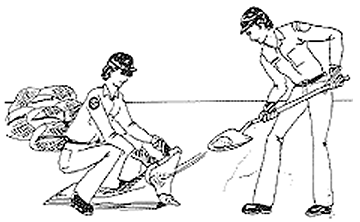
B. Fold over the open end of the bag in a triangle to present sand from leaking out. Close-knit burlap bags are recommended.

C. Your finished bags will look like this:
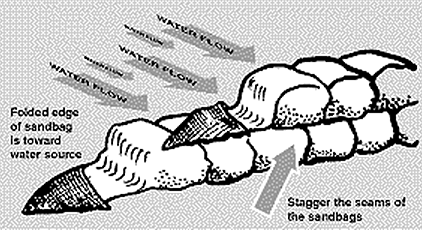
D. Place a line of bags with the folded side up, with folded edges facing the direction of water flow. Stomp each bag into place. Like you would bricks, stagger the next layer of bags over the folded tops of the bags underneath. Stop each layer of bags. To give the structure stability, the base should be 1.5 times wider than the height. (Example, 6 ft. wide by 4 ft. high)
E. When you don't have time to build a sandbag barrier, use a temporary levee to raise low areas. Prepare ahead by buying 20-foot-wide sheets of plastic (6-10 mil thickness). Lay out the length you need and place sand, dirt, or gravel on the half facing your property. Fold over the other half and place a solid row of sandbags on the edge of the plastic to anchor the top edge of the plastic sheet.
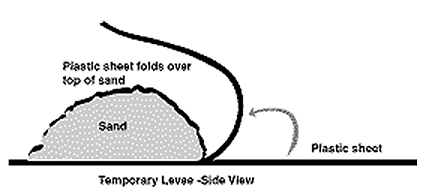
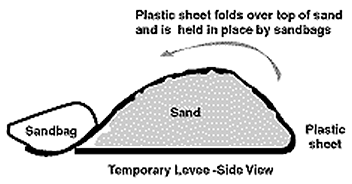
F.In locations where water could rise with no current, such as at lake shores, lay visquine plastic on the ground up to walls, and form a half pyramid of sandbags. Cover doors and vents with plywood.
